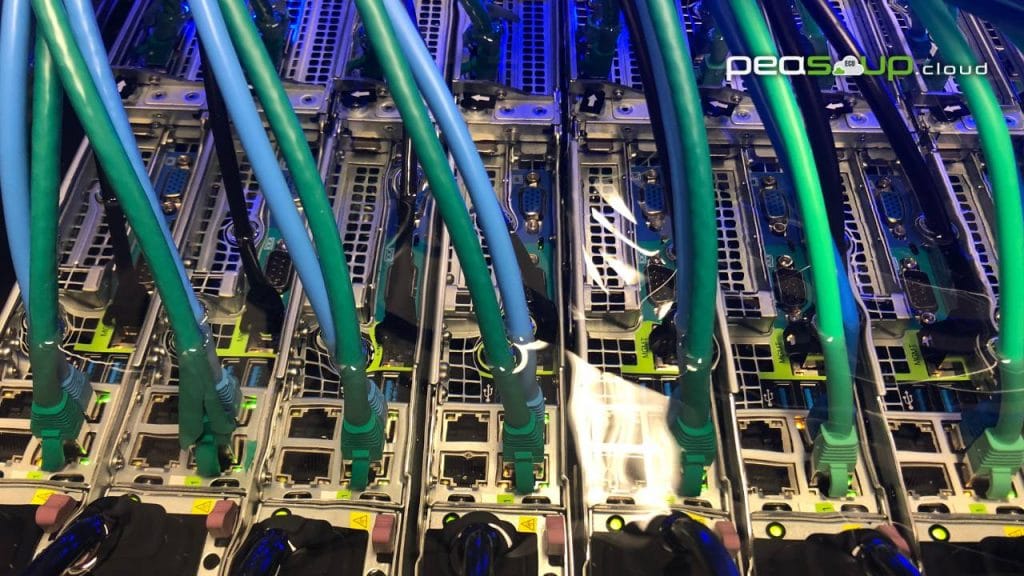Symbiotic Relationship Between Cloud and Liquid Immersion Cooling
Cloud computing revolutionises IT resources, while liquid immersion cooling enhances energy efficiency and hardware protection in data centres, creating a sustainable symbiotic relationship.
In an era defined by digital transformation and data-driven decision-making, data centres are the backbone of modern technology. These facilities house the servers and infrastructure that power the cloud computing services we rely on daily. Among the many technological advancements shaping the landscape of data centres, two concepts stand out for their transformative potential: cloud computing and liquid immersion cooling.
Cloud Computing: Revolutionising IT
Cloud computing has redefined how organisations manage and utilise their IT resources. It enables the delivery of a variety of computing services – including servers, storage, databases, and software – over the Internet. It’s a paradigm shift from the traditional model of on-premises data centres and localised computing.
Cloud computing
Cloud computing offers a multitude of key features that make it a transformative technology. Scalability is one of its standout attributes, allowing cloud resources to be effortlessly adjusted to meet fluctuating demands, providing unmatched flexibility. Moreover, cloud computing is synonymous with cost-efficiency, as it negates the need for hefty upfront investments in hardware and significantly reduces operational costs, ensuring that organisations pay only for the resources they actually use. Additionally, cloud users have the advantage of choosing from a range of service models, such as Infrastructure as a Service (IaaS), Platform as a Service (PaaS), and Software as a Service (SaaS), tailored to their specific needs. Accessibility is another hallmark feature, enabling users to access cloud services from anywhere with an internet connection, fostering remote work and collaboration. Furthermore, cloud providers assume the responsibility of managing services, and handling maintenance, security, and updates, which frees organisations to concentrate on their core business activities.
Liquid Immersion Cooling
While cloud computing has revolutionised data centre services, it has brought about new challenges, most notably increased power consumption and heat generation. This is where liquid immersion cooling comes into play. It represents a transformative approach to managing the heat generated by servers and hardware components within data centres.
Liquid immersion cooling, involving the submersion of server hardware in a dielectric fluid or coolant, stands out for its remarkable advantages. Firstly, it excels at heat dissipation, allowing for higher server densities and improved heat management. This method also contributes to energy efficiency by reducing data centre energy consumption, ultimately lowering the carbon footprint. Furthermore, it offers valuable hardware protection, shielding components from dust, moisture, and environmental factors, potentially extending their lifespan. Liquid cooling’s space efficiency is notable as it eliminates the need for bulky air conditioning units and spacious server rooms, optimising the physical footprint. Lastly, it brings the advantage of noise reduction, creating a quieter and more pleasant working environment for data centre employees while also reducing noise pollution in the vicinity. community.
While liquid immersion cooling offers compelling advantages, it’s worth noting that implementing such a system requires substantial adjustments to data centre infrastructure and may not be suitable for all environments. However, as the demand for energy-efficient and sustainable data centre solutions grows, liquid immersion cooling is becoming increasingly viable.
A Symbiotic Relationship
The relationship between cloud computing and liquid immersion cooling is symbiotic. Cloud computing relies on the availability and efficiency of data centres, while liquid immersion cooling helps optimise these data centres, making them more energy-efficient and cost-effective.
By integrating liquid immersion cooling into cloud data centres, the industry is taking a significant step towards sustainability and resource optimisation. These cooling systems not only enhance performance but also align with the growing focus on environmental responsibility.
As technology continues to advance, data centres will evolve to meet the increasing demands of cloud computing. The combination of cloud services and liquid immersion cooling represents a dynamic fusion of innovation and efficiency, driving the digital transformation of businesses and the preservation of our environment. This transformative journey promises a future where technology meets sustainability, delivering both performance and responsibility.
In the coming years, the marriage of cloud computing and liquid immersion cooling is poised to reshape the landscape of data centres, setting a new standard for efficiency and environmental stewardship. It’s a promising future where data centres power our digital world while treading lightly on the planet.

